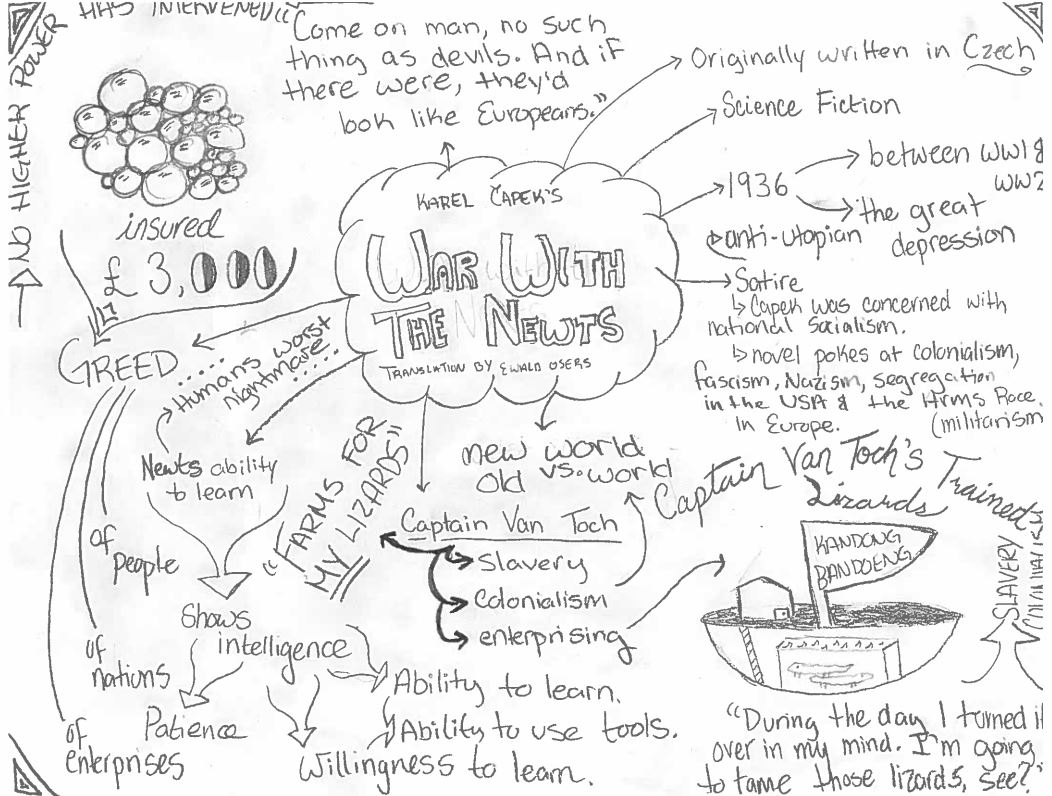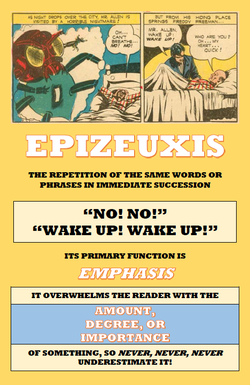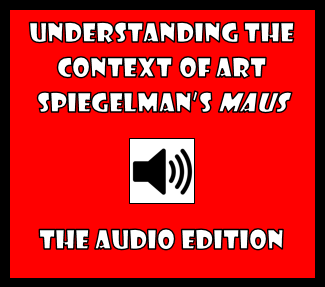A Visual Intro to Sci-Fi and Satire: Adding War with the Newts to Your High School Reading List
5/20/2014
A nice way to acquaint your students with a new text they'll be studying is to use something visual. It's especially powerful if this visual piece is done by a former student who has studied the work. We've all used video clips and the like to kickstart a unit on Shakespeare, so why not use a piece of visual brainstorming to do likewise. As we can see in the example above from Hannah, such a piece doesn't take a long time to create and it can capture some of the essential learnings and enduring understandings that are takeaways from the unit. Hannah's example deals with Karel Capek's War with the Newts, a science fiction novel written in the 1930s that satirizes the rise of Fascism, Nazism, as well as racism in America. In the story, a race of sentient newts is discovered, and through a series of circumstances paralleling the events following the end of WW1, the Newts eventually rise to a position of power. A great pre-reading strategy is to give students a piece of visual brainstorming like this and to ask them what they think the novel will be about. This can be done in combination with showing them the short video clip below. The result is that students are required to activate their prior knowledge and make predictions prior to reading, which are both excellent strategies to better ensure that they eventually grasp the enduring understandings of the unit. Try it with your students and let me know how it goes! If you enjoyed this article, you might also enjoy:
0 Comments
Your comment will be posted after it is approved.
Leave a Reply. |
Glen DowneyDr. Glen Downey is an award-winning children's author, educator, and academic from Oakville, Ontario. He works as a children's writer for Rubicon Publishing, a reviewer for PW Comics World, an editor for the Sequart Organization, and serves as the Chair of English and Drama at The York School in Toronto. If you've found this site useful and would like to donate to Comics in Education, we'd really appreciate the support!
Archives
February 2019
|





 RSS Feed
RSS Feed
